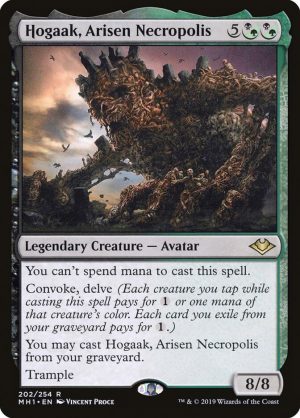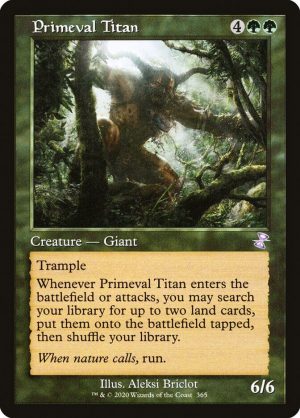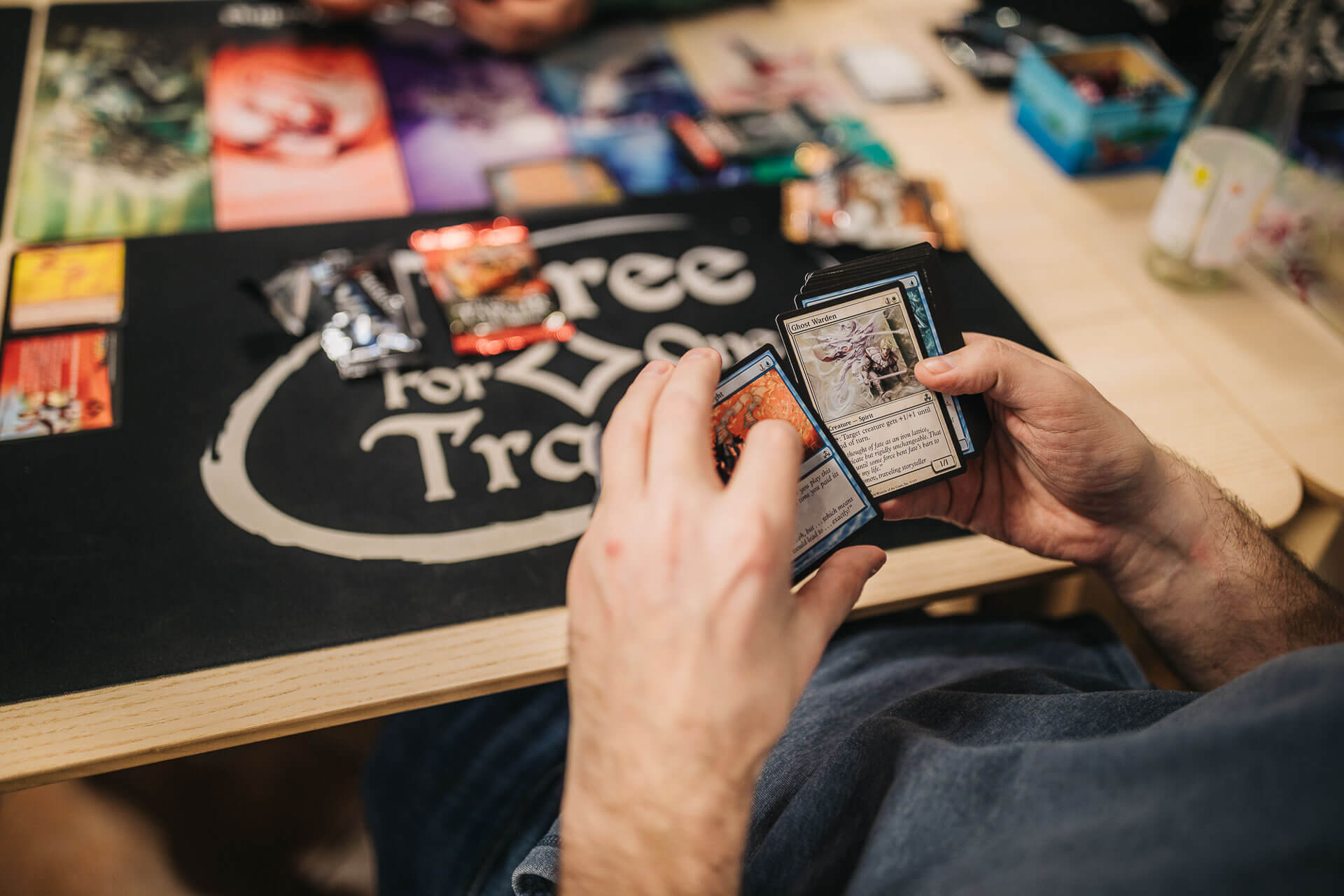Should You Play The Best Deck?
Experience vs. Meta
Play The Best Deck or Trust in The Deck You Know?
Author: Paulo Vitor Damo da Rosa
Before the last Pro Tour, a friend of mine approached me asking for advice in deck selection. He told me that the team thought the best deck was Lotus Field, but that was a deck he didn’t have a lot of experience with, so he was worried about not having enough time to master it before the event.
In this spot, should he play the best deck, or should he play the deck he knows inside and out that is good, but not as good?

Each Deck Has a Potential Strength
This is a rather common question in all levels of play – in fact, when I coached people, it was one of the main questions I got.
The short answer is that, assuming the difference in deck strength isn’t too large, you should play what you are used to.
The long answer is, as it often is, that it depends on a variety of factors that we will elaborate more in this article.

The way I like to think about it is that each deck has a potential strength (or a range of strength), and then you need to figure out as a player how much of that potential you are capable of realizing. In the end, it doesn’t matter which deck has the most potential (i.e. which deck is the theoretically strongest in a vacuum), because when you sign up to play a tournament, you don’t play with the deck in perfect conditions – what it matters is what number you can get to in that specific tournament.
In very simple terms, it doesn’t help to know that the fastest way to a place is by helicopter, because you don’t know how to fly a helicopter – so the fastest way for you is to drive a car as opposed to taking the bus, and that’s the answer you’re looking for, even if theoretical faster methods exist.
Ranges of Winrates
For example, in the scenario given to me by my friend, we could say that Lotus Field is a deck whose range is 45%-65%.
This means that if played badly the deck will have an expected winrate of 45%, and if played perfectly the deck will have a winrate of 65% (which is a lot).
Now, the other deck in question might be a deck that ranges from 43% to 60%.
We know my friend will play that deck close to perfectly, they will have fleshed out sideboard plans, etc., so we’ll give him a 58% expected winrate with it. All that remains is determining whether he will play the Lotus Field deck close to maximum capacity so that he surpasses that 58% or not – he doesn’t need to play it perfectly, he just has to get over 58%.

Ultimately, the upper ranges of the decks (65% and 60%) are not relevant to make his choice – what is relevant is how much of that potential he believes he will be able to realize in this tournament. This means that the answer for which deck to play can and will be different for each player.
So, what are the things we need to think about when making this decision?
How Much Better Is The Best Deck?
In the end, a lot of it is going to bow down to how good the best deck is compared to your deck.
In competitive Magic, the top decks are usually very close to each other, so you do not need to gain a lot of ground with experience to make up for playing the theoretical inferior choice. You might be in a spot where the best deck is a 58% deck and the fourth-best deck is 56%, in which case you can almost assuredly make up that difference with better sideboard plans alone.

Most of the time, if the best deck isn’t actually broken and if the deck you’re considering playing is one of the top decks, you’ll be fine.
For example, in the past Pioneer Pro Tour, it turned out that playing any of Lotus Field, Izzet Phoenix, Amalia, Vampires, and some other decks were all reasonable choices, because they were all very close to each other, and it was possible to make up that percentage by just being more familiar with the decks.
There are spots, however, where the difference in power between the best deck and the deck you’re considering playing is so large that you simply can’t make it up with familiarity.
For example, in the Hogaak PT, basically everyone should have just played Hogaak – the deck was that much better than every other deck. Even if you took a stock list and just copied Kanister’s sideboard guide, you were likely to do better than with anything else.
The same happened with Simic Food and Temur Reclamation down the line. Similarly, sometimes the deck you’re considering isn’t actually the third-best deck, but the eleventh-best deck, in which case it’s probably too weak that no amount of familiarity will save you.
Basically what I am saying is “it’s fine to play one of the best decks if you’re more experienced with it”, and not “you should play your pet deck in all events” – as a general rule, if you’re the only person playing that deck, it probably doesn’t clear the bar (though of course there are exceptions).
Where Do Your Skills Lie?
Almost every Magic deck is hard to play correctly, but they can be hard in different ways that play or don’t play to your skills. Because of this, it’s important to understand both what your strengths and weaknesses are, as well as what type of deck you’re deciding between.
Some players are great at combat math, so they are better with decks that have creatures. Some players have great patience, and are good with control decks and with interaction. Some players are good at macro-game plans and excel at decks that switch gears between aggro and control.
It’s very important to know what you are particularly good and particularly bad at, so you know how well you will play a given deck even if you do not have a lot of practice.
Using me as an example, I think I’m overall proficient with most decks – I am a very experienced player, after all – so I can pick up almost anything, practice for a day or two and be good to go.

However, there is one particular type of deck where I struggle – combo decks that are very mathy, like Lotus Field from my friend’s example, Ironworks combo or even Mono-Green Devotion. It’s hard for me to keep track of cards, mana and hate cards in the middle of a ten-minute turn, and because of this I play these decks at a lower level than I play all other decks.
Some players are the opposite – Matt Nass, for example, particularly excels at this type of deck. I’m a better player than Matt Nass, but it would take me a significant amount of effort to become a better Ironworks player than him, and it might honestly just not be possible for me to do it.

The better you are with a style of deck, the lower the bar is for you to change to it, because you’ll be able to get a better result out of it with a smaller amount of reps. Basically, if you’re considering changing to Mono-White Aggro, then having played a lot with Mono-Green Aggro in the previous format might go a long way towards that, even if the decks are not identical.
How hard to play is the best deck?
When you’re deciding between “best deck” and “familiar deck”, it’s important to know how hard the best deck is to play properly, because maybe you are not very experienced with that style of deck, but that’s a deck that doesn’t require a lot of experience, so it’s OK to switch.
As an example, let’s take the second PT Honolulu. For that tournament, I was pretty convinced I was going to play Delver – it was one of the best decks, and it was a deck that played exactly to my strengths. I had even top 8’ed a Grand Prix with Delver two weeks before, so I had a good list and good sideboard plans.
In fact, I was so convinced I already knew everything there was to know about the deck that I went out to sightsee the day before deck submission, which is something I virtually never do.
When I came back from my outing, my team had found a new deck that they thought was broken – RG Ramp.
Everyone had switched to it and people were testing it thoroughly.
I then had a decision to make – one day before deck submission, I could play a deck that I knew was good and for which I was arguably the best pilot in the entire world, or I could play an entirely new deck that we had just found out about and that I had never seriously played until then (I’m not very big on ramp decks, so I had very little experience with the style).

What was my choice?
I chose to play the RG Ramp deck.
Why?
Because ramp decks are easy! I knew I only had two days to learn the deck (one after submission), but I also knew it was going to be OK, because there isn’t anything too complex about counting to six and playing Primeval Titan.
Had the deck been something very complex instead (such as the aforementioned Lotus Field), I would never have been able to do it, but it was so simple that I felt I could play it at a reasonable level even if it did not play to my personal strengths, to a point where I would get more value out of it than playing Delver at maximum potential.
In the end, I ended up getting second in that PT, losing the finals to Kibler – who had a very similar decision to me as he also had to switch from his trusted RG Midrange deck at the last minute.
Time and Opportunity Cost
Sometimes, there’s simply no ability for you to learn a new deck in time, even if it’s not a complex deck – you still need to be able to figure out sideboard plans, for example.
In my case, I’ve usually had access to a big team, which meant if we needed to try a sideboard card, and we had two hours to do it, we could reasonably get five instances of the same matchup going side-by-side and then compare the results.
Most people don’t have that, so switching becomes harder.
There’s also a matter of the opportunity cost – even if you have time, you could be doing something else with that time. This is often the case with professional events, where people play multiple formats (such as Standard and Draft) and then any time used up learning a new deck is time you take away from practicing Limited.

One interesting example of this happened at Pro Tour London.
For PT London, our team found out early on that Hardened Scales was the best deck, an assertion I did not dispute. Hardened Scales is very much not my style, as it’s the kind of mathy combo that I struggle with, but there were still two weeks before the tournament – plenty of time for me to learn it if I wanted to.
However, there was something else particular about PT London – it was supposed to be the “pre-release” debut for the set War of the Spark, which meant that we were going to draft it before it was even out in public. This means you actually couldn’t play the set before the tournament, whether it was in person, on Magic Online or on MTGArena.
So what our team did (alongside various other teams) was to print proxies of the cards as soon as they were spoiled so we could draft.
This meant all our prep had to be done in person as soon as we met (usually we practice draft online as well), and it also meant that the edge to be gained in the format was tremendous, because a ton of people were going to have no clue what was going on, which meant time spent on Limited was very valuable.
In turn, this meant that the opportunity cost of learning Hardened Scales for me was too big, as I wanted to use those two weeks to mostly master the Limited format.

So, what did I do?
I decided to play Tron, which was a deck that I thought was good, but not as good as Hardened Scales. I had never played Tron before, but I knew it was a much simpler deck, and I knew that I would be able to get much closer to its full potential with little practice, which would free up a lot of time for me to practice the other format of the tournament.
So, even though the ultimate potential for Hardened Scales was higher, it wasn’t worth the downside of being unable to practice Limited, because I had an alternative that was also very good and that required little practice. If Hardened Scales was instead a different style of deck (one that I am more skilled with), then I would have felt comfortable enough to switch to it without practicing much.
Something similar happened for the last PT I played, where I identified early on that Lotus Field was the best deck.
I knew Lotus Field was not a style of deck I’m good with, but in this situation I thought it was better than the rest of the field by a wide enough margin that it was worth spending the time to learn it.
I locked in the deck very early (which is unusual for me) and spent 2–3 weeks focusing on it, because I knew it was a deck that gave me trouble and I knew I’d need all this time to master it.

In the end, this turned out to be the incorrect decision.
My limited knowledge suffered a little because I had to dedicate so much to Constructed, and it also turned out that Lotus Field was so far beyond my usual skillset that the 2–3 weeks I spent on it were simply not enough, as I was still not playing it at a high level (though part of this was because my testing had most been online and a hard part of playing the deck has to do with the paper mechanics and tracking colors of mana, which the online softwares all do for you).
It would have been much better for me to play a slightly worse deck that played a lot more to my skills, and it would have given me more time to test Limited!
What are your goals?
It might seem like playing the deck you know is almost always going to be the right decision, and that’s true if your goal is to win an event immediately – but that’s not necessarily true if your goal is to learn and improve.
If you keep asking yourself “which deck gives me the highest win rate now?” every time, then you’ll end up playing the same style of deck over and over, which will make you even more proficient with that deck and even worse with the other types of decks, until you’re basically forced to play that deck every single time because you’re so much better with it.
This can be a problem if the metagame is particularly harsh for that style of deck, and many high level pro players ran into this issue when their usual deck became bad.
If you have a tournament you want to win right now, then by all means choose the highest expected win rate.
But if your goal is long term improvement, then you need to be able to play a variety of decks, because the metagame is always changing. This means accepting that, for a period of time, you might not do as well as you otherwise would, because you’re not playing the deck that gives you the maximum EV, but it also means that, if in six months it turns out your deck is unplayable and a radically different deck is the best deck, you’ll be able to pilot it at a reasonable level.

Are you playing Limited?
Power versus familiarity is mostly a constructed conundrum, but it can also show up in Draft when a player opens a powerful card in one color but is not used to playing that color.
In this spot, should they take the best card, or should they take a worse card for the deck they usually win with?
In Limited, when we pick a card, we often balance how strong it is with how likely we are to play it.
For example, if it’s pack 1 pick 1 (p1p1), I will likely pick a colorless card that’s a little bit worse than a normal card, just because the colorless card will always make my deck. Similarly, I will pick a monocolored card over a multicolored card, even if the multicolored card is slightly stronger.
The same train of thought applies for preferences – if you have a strong preference for Green cards, then you’re more likely than normal to end up in Green, which means Green cards become slightly higher priorities for you, since they are more likely to make your deck.
If you’re literally never putting a White card in your deck, there’s no point in you picking a White card (though I would not recommend being completely closed to a color either – sometimes you just open a White bomb, and it’s good to be able to play it).

I am very much a “draft what you open” kind of person, so I personally avoid having strong preferences unless I believe a certain type of deck is very underdrafted.
Some people like to focus on a couple of strategies before a tournament (either because they aren’t super experienced with limited or with the set, because they don’t have much time, because their opportunity cost is too high or simply because this is what has worked for them in the past), and those people should definitely adjust their picks to match those strategies.
Conclusion
So, in the end, what was my advice to my friend?
For me, it came down to how much better he thought the Lotus Field deck was than the next option. I told him that if he thought the deck was just broken, to a point where he’d feel comfortable telling all his teammates they would be making a mistake not to play it, then he should bite the bullet and spend his remaining time trying to master it.
If he thought the deck was better but not enough that he’d feel comfortable saying this and trying to persuade everyone else to play it, then it didn’t feel like the costs were worth it to me, and he should just play the second-best deck.
Ultimately, he decided to play the other choice, and it worked out well for him and the team.

The conclusion here is that, most of the time, if the deck you’re best at is close in power level to the best deck, you should stick to your guns.
In this example, the person considering the switch is one of the best players in the world, with access to the most resources in the world, and they still felt like they would do better playing the deck they were most familiar with, because the difference in power level was not that big, they were not super familiar with that style of deck, and they felt the time was better spent working on Limited.
It’s not a shame to say “I don’t have time to become as good as I need to with this deck” or even “I’m not skilled enough with this type of strategy to win with this deck” – even the best players in the world do this regularly and this is a mindset you should adopt if you’re trying to win more in MTG.
About the Author
Paulo Vitor Damo da Rosa (PVDDR) is one of the most accomplished Magic players of all time; he was World Champion in 2020, Player of the Year in 2017 and he’s tied for most top finishes in history with 17 appearances.

More Articles by Paulo Vitor Damo da Rosa
Should You Play What Is Best Or What You Know
Paulo Vitor Damo da Rosa joins our writing team. In his first article, Paulo reflects on competitive deck choices and answers the question: Is it better to pick the deck you know best or to play the new game breaking meta deck?
